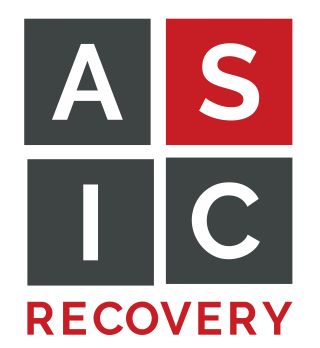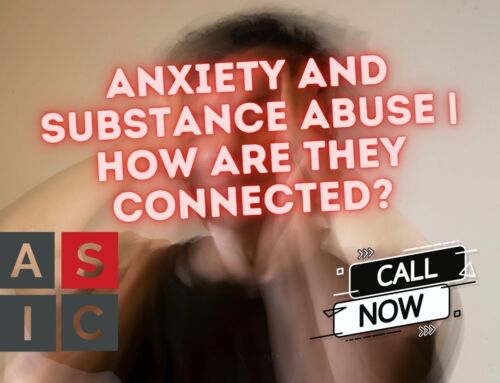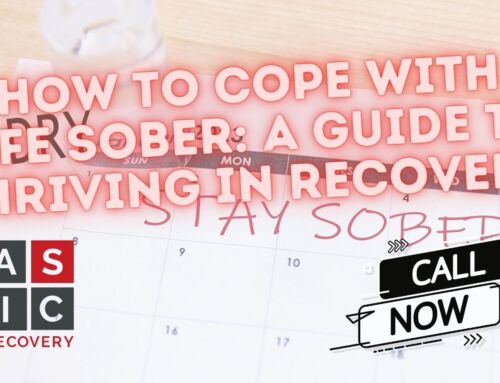Ketamine abuse and addiction have mostly fallen under the radar given the recent advances in ketamine therapy, but even though the drug has many newly discovered therapeutic benefits, it still can become addictive to those who suffer from substance use disorder.
Ketamine was originally (and still mostly is) a medication used for starting and maintaining anesthesia. It induces a trance-like state while providing pain relief, sedation, and memory loss.
It also has hallucinogenic effects and produces a “high,” which has led to its widespread use, especially in the so-called “rave” scene, where it is regularly mixed with other “club drugs,” like cocaine and GHB.
Ketamine was first synthesized in the 1960s and has since been used in human and veterinary medicine for decades.
Ketamine therapy has also recently gained popularity–the drug has been shown to be an especially powerful antidepressant, and it also has been used to enhance various forms of therapy for patients suffering from PTSD.
Despite its clinical uses, it has a dark side. When misused, it can lead to serious health risks and addiction.
It’s crucial to understand that, like any drug, ketamine should be used responsibly and only under the supervision of a healthcare professional. For those who suffer from substance use disorder, it may be best to avoid ketamine entirely.
The Science Behind Ketamine
Ketamine is classified as an NMDA receptor antagonist. This means it blocks the action of the NMDA receptor, a protein in the brain that plays a pivotal role in learning, memory, and perception of pain.
When ketamine inhibits the NMDA receptor, it alters the user’s perception of reality, leading to hallucinations and a feeling of disconnection from yourself and the environment.
Moreover, ketamine affects the brain’s reward system, causing a surge of dopamine—a neurotransmitter associated with pleasure. This dopamine rush is what makes people want to keep using the drug. It’s what produces the euphoria or “high.”
However, over time, the brain adapts to the excess dopamine, requiring more of the drug to achieve the same high—a key characteristic of addiction.
Lastly, ketamine has a quick onset, meaning its effects can be felt within minutes of ingestion. This immediacy can make the drug more appealing to users, increasing the risk of abuse and addiction.
The addiction potential of ketamine is increased exponentially when it’s mixed with other drugs, which many users do. It’s very common for people who have become addicted to ketamine to be polysubstance abusers, which makes recovery that much harder.
Ketamine Use: Medical vs Recreational
Ketamine, when used correctly, can provide significant medical benefits. It’s used as an anesthesia in surgeries, particularly in procedures involving children, the elderly, and those with certain medical conditions.
Because it reduces pain substantially while also erasing your memories, it’s the perfect anesthetic. It’s also very safe in clinical doses–much safer than opioid medications–while still relieving pain, which makes recovery faster.
Additionally, ketamine has been used for over a decade to treat severe depression that isn’t being adequately addressed by traditional antidepressants (known as treatment-resistant depression).
Much more recently, ketamine has begun to be used to treat many other mental health disorders, including OCD, anxiety, PTSD, and more. Ketamine clinics have popped up all over the country and are generally referred to as a form of psychedelic therapy.
Research has shown that this form of therapy can be safe and effective when performed by a licensed professional therapist in a therapeutic setting.
However, the recreational use of ketamine is a different story. It’s often used in club scenes due to its hallucinogenic effects, earning it the street names “Special K,” “K,” and “Vitamin K.” Users may snort, inject, or swallow it, with each method of consumption carrying its own risks.
The recreational use of ketamine can lead to harmful physical and psychological effects, including addiction.
The Side Effects of Ketamine
Whether used medically or recreationally, ketamine has side effects. Users may experience:
- Nausea
- Vomiting
- Numbness
- Depression
- Amnesia
Moreover, high doses can lead to severe respiratory problems, seizures, and even coma.
Long-term use can cause additional problems. Chronic users may suffer from “ketamine bladder syndrome”, resulting in painful urination and potential kidney damage.
Additionally, long-term ketamine use can lead to cognitive impairments, including problems with attention, learning, and memory.
The psychological side effects of ketamine can be just as detrimental. Frequent users often report feelings of anxiety, paranoia, and depression.
Moreover, due to the drug’s hallucinogenic properties, some individuals may experience terrifying hallucinations or “K-holes”—an intense, overwhelming state of dissociation.
Is Ketamine Addictive? Understanding the Risk
While it may not be as physically addictive as opioids or alcohol, ketamine can lead to psychological dependence. As mentioned, the drug’s effects on the brain’s reward system can create a cycle of use and addiction.
Over time, users may develop a tolerance to the drug, requiring larger doses to achieve the desired effects.
They may also experience withdrawal symptoms when they stop using the drug, including anxiety, restlessness, and insomnia. These factors combined make it difficult for users to quit using ketamine on their own–many who become addicted eventually enter some form of addiction treatment.
Signs and Symptoms of Ketamine Abuse
Recognizing the signs and symptoms of ketamine abuse is crucial for early intervention. Physical signs may include:
- Unexplained injuries
- Poor hygiene
- Changes in weight or appetite
- Frequent nosebleeds (if the drug is snorted)
- Small puncture wounds on the body from injections, typically the arms and legs (known as track marks)
Behavioral signs can include:
- Increased secrecy
- Withdrawal from social activities
- Job difficulties or loss
- Changes in mood or personality
- Unexplained financial problems
- Frequently disappearing for days at a time
Psychological symptoms can be harder to spot, but may include:
- Anxiety
- Depression
- Paranoia
- Impaired cognition
- Confusion or disorientation
If you or someone you know exhibits these symptoms, it’s important to seek help immediately.
Treating Ketamine Addiction: Approaches and Therapies
Fortunately, help is available for those struggling with ketamine addiction. Treatment typically involves a combination of medical detoxification (detox) and therapy. Detoxification helps to manage withdrawal symptoms, while therapy (like drug rehab or intensive outpatient therapy) addresses the psychological aspects of addiction.
Cognitive-behavioral therapy (CBT) is often used in the treatment of ketamine addiction. CBT can help individuals understand their addiction, identify triggers for use, and develop healthier coping strategies.
Ketamine Addiction Is Treatable
Ketamine addiction is a serious issue, but help is available. However, with the right support and treatment, it’s possible to break free from the cycle of addiction and regain control over your life.
If you or a loved one is struggling with ketamine addiction, we can help.
At ASIC, our Intensive Outpatient Program (IOP), counseling programs, and Partial Hospitalization Program are dedicated to helping you develop healthier coping skills and build a supportive recovery network so that you can achieve long-term sobriety.



